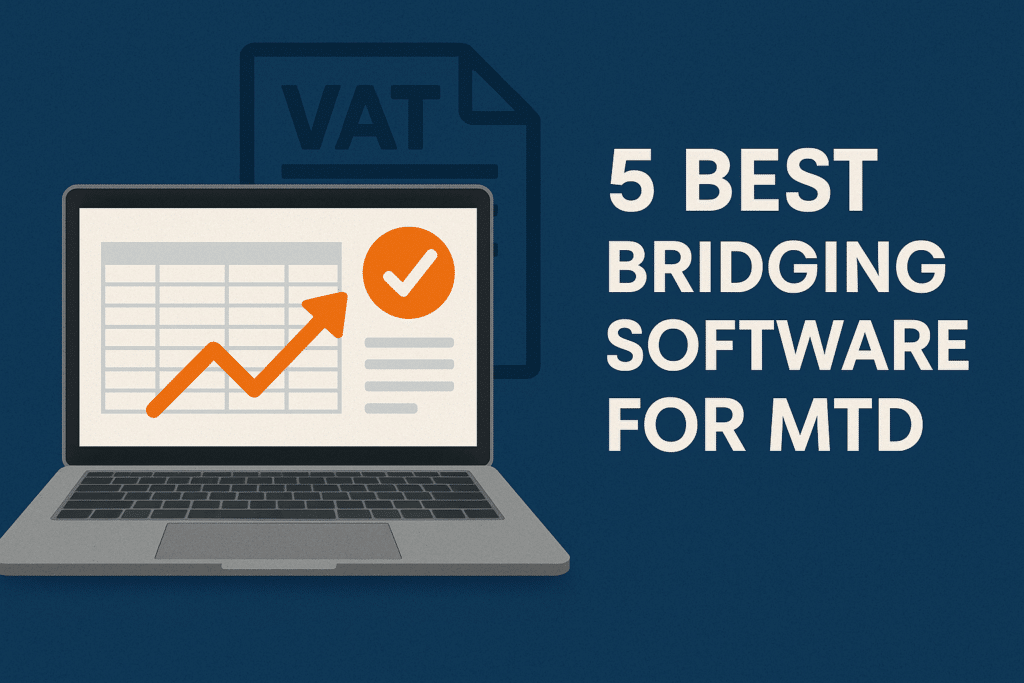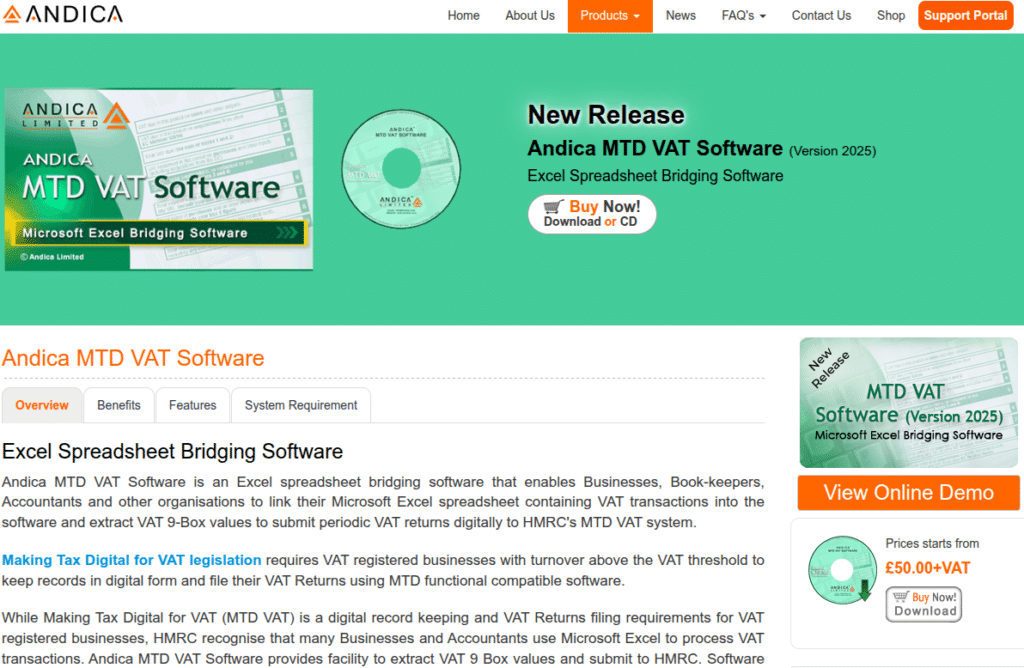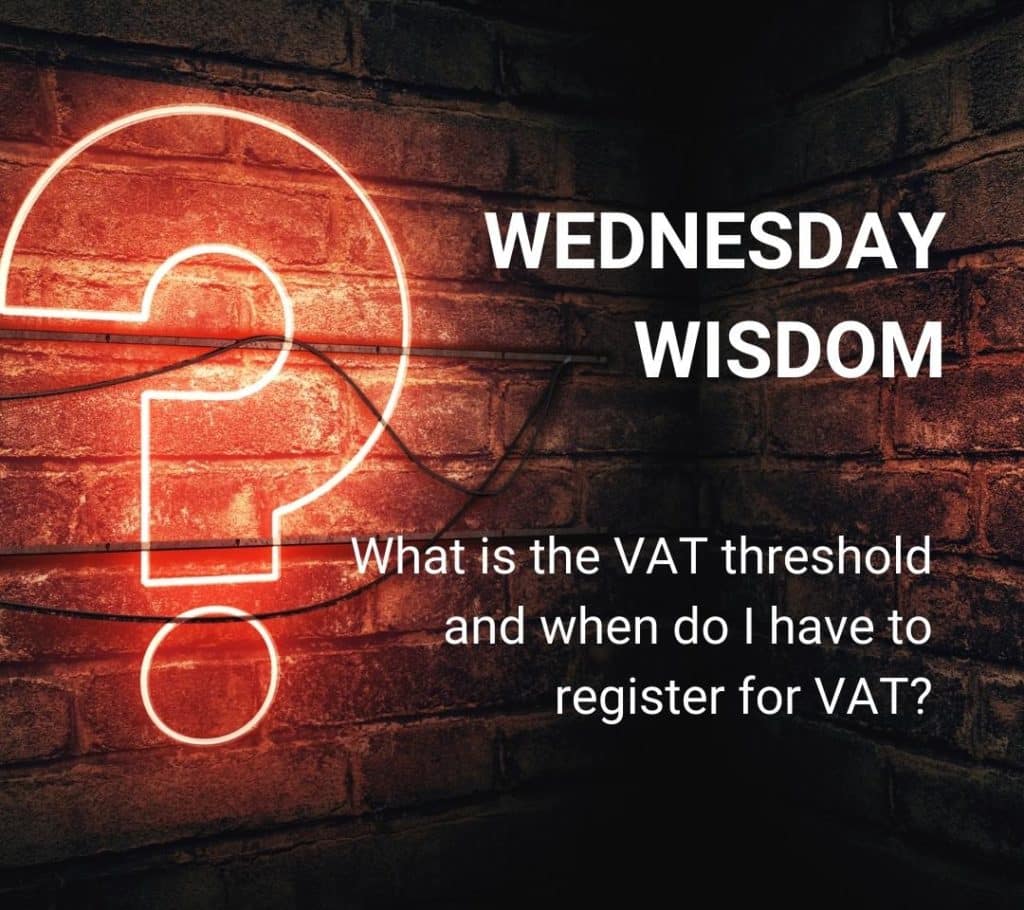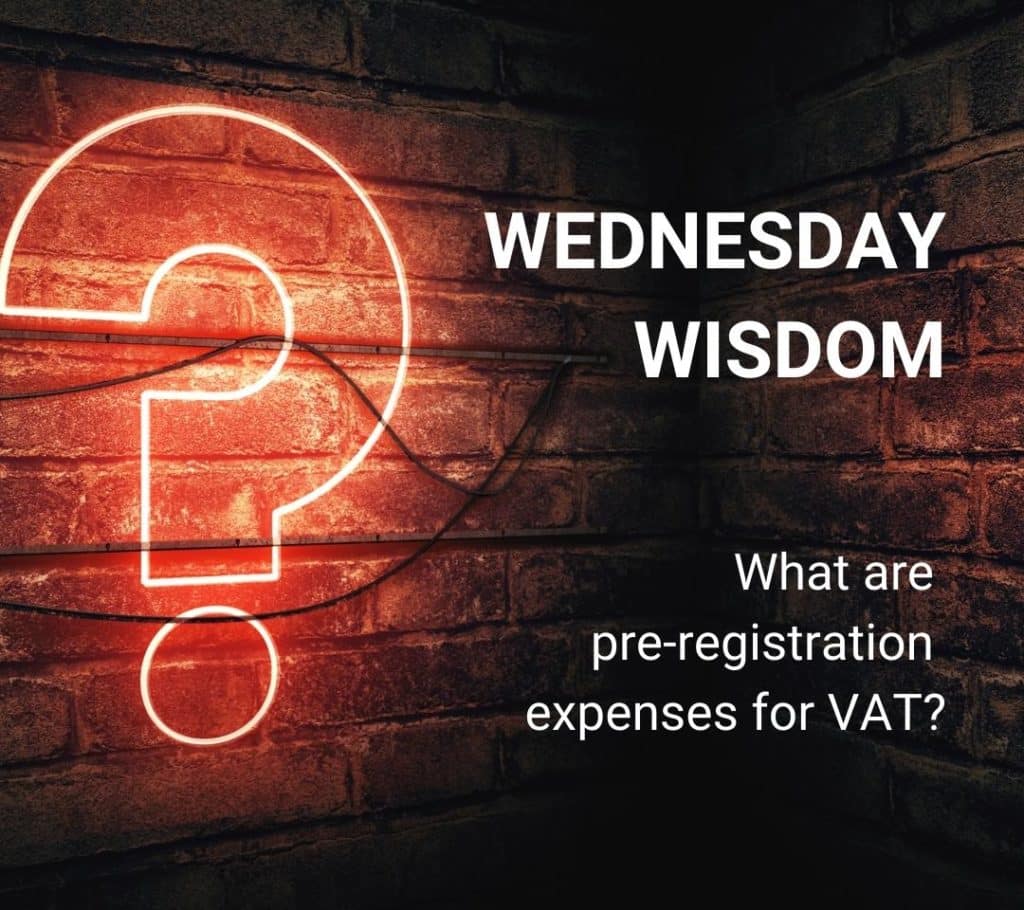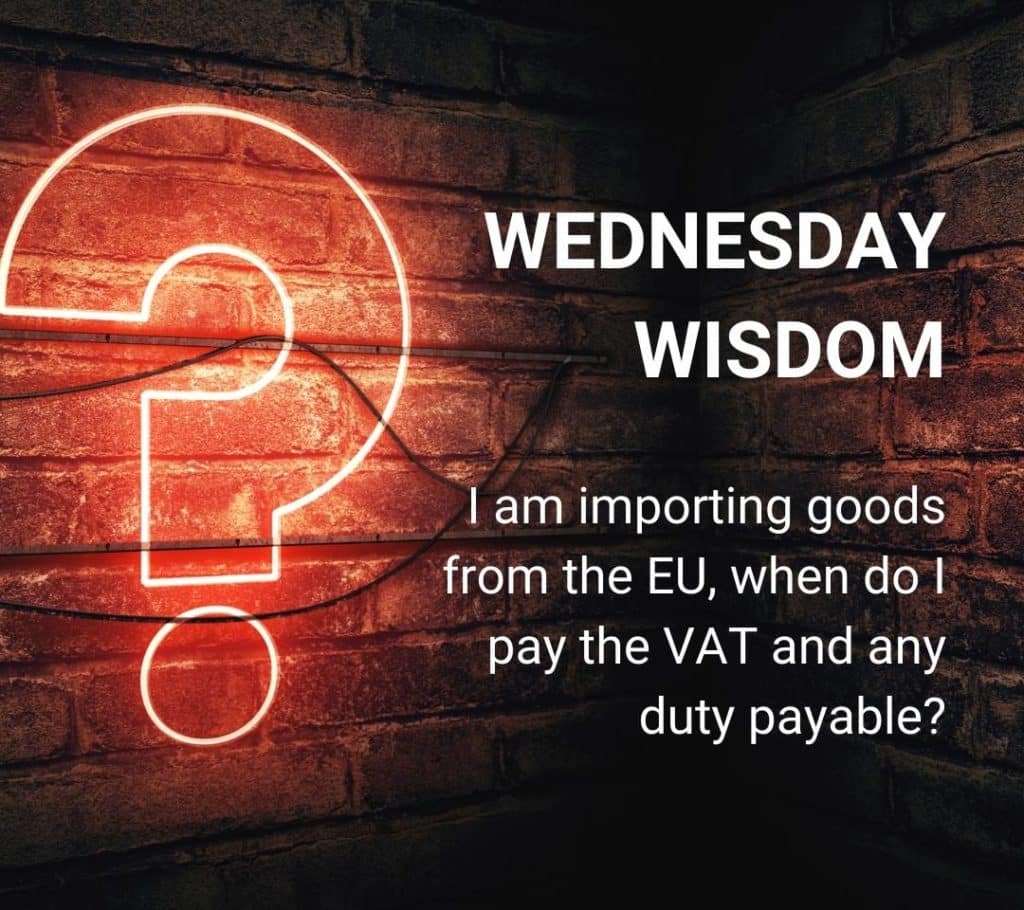MTD bridging software is a simple tool that lets you keep using your spreadsheets while staying compliant with HMRC’s Making Tax Digital rules.
Instead of switching to expensive accounting platforms, you just link your Excel file to the software – it acts as a “bridge” between your VAT data and HMRC’s system.
In contrast to the best MTD-compatible software, a bridging software doesn’t change how you do your bookkeeping. It creates digital links for MTD, and makes sure your VAT returns are submitted digitally, exactly the way HMRC now requires.
No double entry, no copy-pasting. Just a clean export from your spreadsheet to HMRC.
Creative Takeaways
- Use spreadsheets for MTD – No need for full software switch (yet).
- HMRC-approved tools only – Stay on the safe side.
- Set up in minutes – Link, authorise, file, done.
- Avoid common pitfalls – Wrong format, manual entries, late filing.
Table of contents
- Creative Takeaways
- 1. MTD Bridging software – compatible with HMRC
- 2. Use spreadsheets for Making Tax Digital with the right software
- 3. Best bridging software for MTD (with pros & cons)
- 4. Step-by-step: how VAT return works with bridging software
- 5. How to avoid mistakes with MTD bridging software
- 6. FAQs about bridging software
- 7. Prepare your next tax return with WallsMan Creative
1. MTD Bridging software – compatible with HMRC
Not all bridging software for MTD is created equal. And not all of it is approved by HMRC!
To be compliant, your software needs to appear on the official HMRC list.
That means it’s been tested to handle VAT submissions properly and securely through the MTD system. If it’s not on that list, using it puts you at risk of non-compliance – even if it seems to work.
The easiest way to check?
Search the provider’s name on HMRC’s compatible software list.
If you’re managing VAT for a creative agency or running books as a freelancer, stick with approved tools. Trust us: peace of mind is worth it when the deadline clock is ticking! And if you need any help with this decision, feel free to reach out:
2. Use spreadsheets for Making Tax Digital with the right software
You can still use spreadsheets for Making Tax Digital, but not on its own.
Spreadsheets are still allowed under MTD rules, as long as it’s connected to HMRC via approved bridging software.
That software pulls the right VAT figures from your spreadsheet and sends them directly to HMRC’s system without manual input.
It means you don’t have to change your existing setup. You can keep your formulas, your tabs, your process – just create an MTD digital link and add the bridge.
This is ideal if:
- You’ve already built your own VAT calculator in Excel
- You don’t want to pay for full accounting software
- You need something fast, simple, and compliant
Our experience shows that creative businesses that work in project-based spreadsheets can sometimes benefit from these bridging software to keep things light without cutting corners… and risking an HRMC penalty.
3. Best bridging software for MTD (with pros & cons)
There’s no one-size-fits-all.
Here’s a quick look at some of the most popular HMRC-recognised options, with who they’re best for.
Absolute Excel VAT Filer
Best for: Excel-heavy users and accountants
Price: £40 + VAT (for a 12-month period)
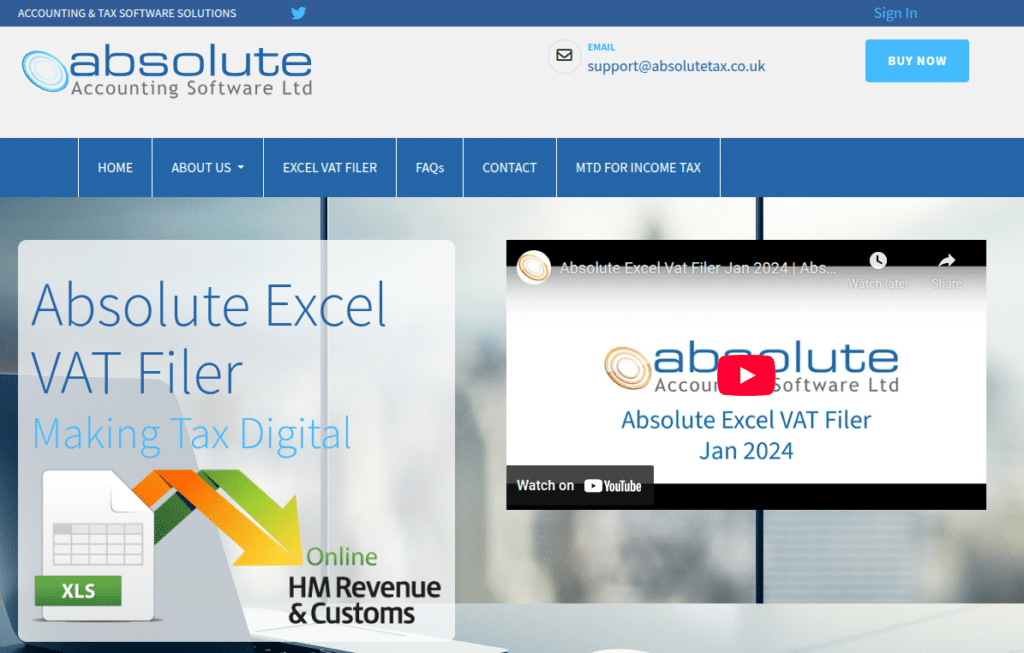
Pros ✅
- Cheap price
- Supports complex spreadsheets
- Lightweight install
Cons ⛔
- Clunky interface
- Not cloud-based
- Less intuitive for beginners
123Sheets
Best for: Small businesses and freelancers
Price: £19.75 + VAT (for a single taxpayer)
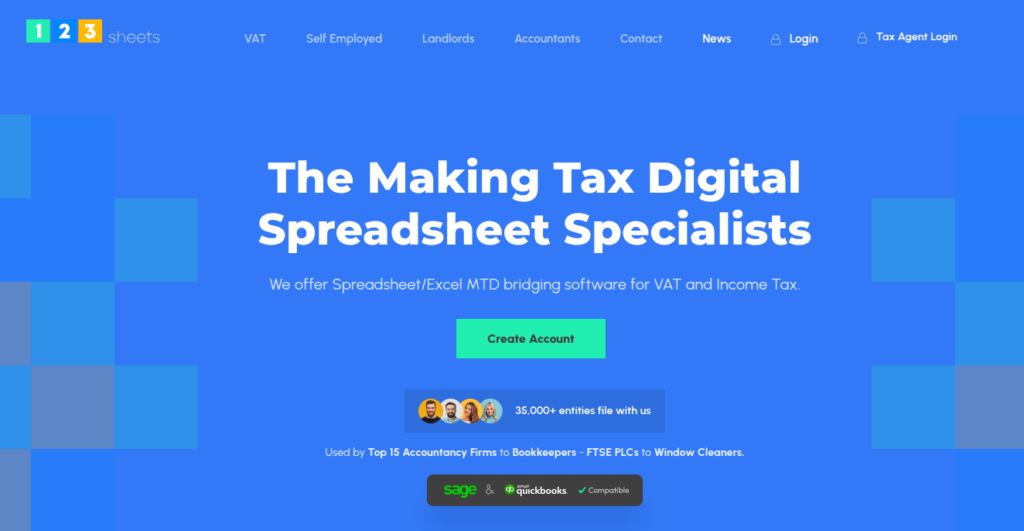
Pros ✅
- Easy setup
- Affordable monthly plan
- Straightforward VAT workflow
Cons ⛔
- Limited features outside VAT filing
- Basic UI
- Lacks integrations
Easy MTD VAT
Best for: Speedy one-off submissions
Price:from £5.99 per token
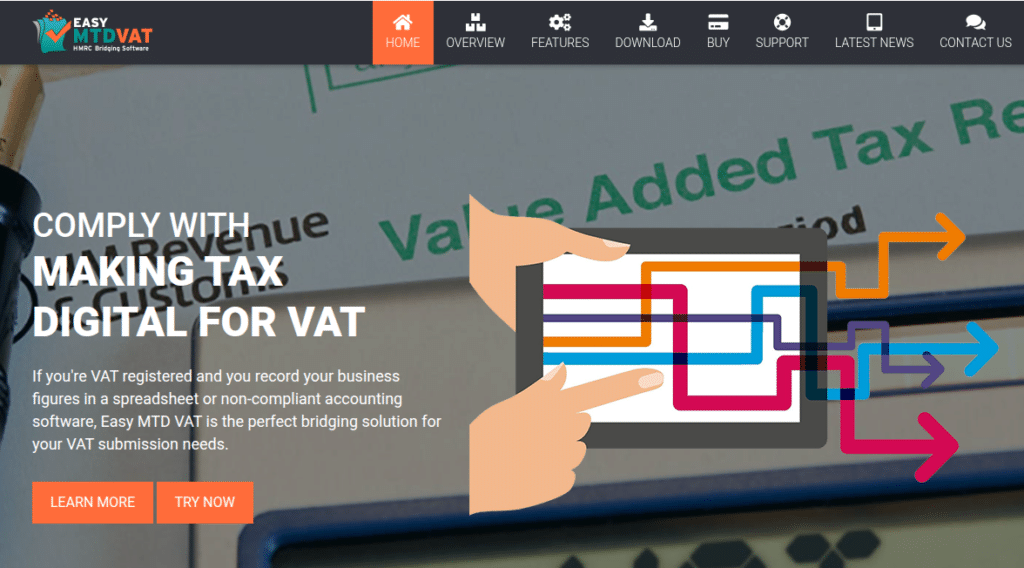
Pros ✅
- Simple drag-and-drop
- Clean UI
- Fast to set up
Cons ⛔
- No advanced data checks
- Minimal reporting
- Limited support
Andica MTD VAT Bridging Software
Best for: Businesses needing multiple company profiles
Price: £50.00+VAT per licence
Pros ✅
- Scalable
- Batch filing supported
- Exportable audit trail
Cons ⛔
- More technical setup
- Dated UI
- Slower learning curve
Xero Bridging Tool (for existing Xero users)
Best for: Those not ready for full MTD migration
Price: Included with Xero subscription (from £15/month)
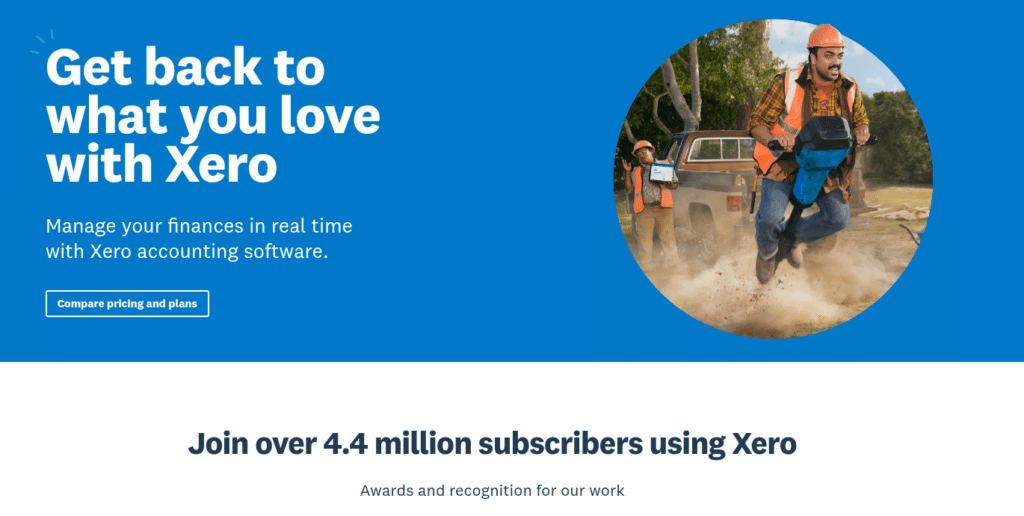
Pros ✅
- Integrates with Xero
- Seamless for existing users
Cons ⛔
- Requires Xero subscription
- Not for standalone spreadsheet use
- Can be overkill for simple needs
Each of these lets you stay MTD-compliant without ditching your spreadsheets. Just pick the one that fits your workflow.
4. Step-by-step: how VAT return works with bridging software
Filing your VAT return through bridging software is straightforward.
Prepare your spreadsheet
Keep your VAT figures organised.
HMRC expects totals in specific cells, so check the software’s template or guidelines. Most offer downloadable Excel examples.
Launch the bridging software
Open your chosen tool and connect it to your spreadsheet. Some require a file upload, others pull data directly.
Check the figures
The software reads your VAT return boxes (like Box 1, Box 6, etc.). Double-check they match your calculations.
Authorise HMRC access
Log into your HMRC account through the software to grant permission. This is usually a one-time process, and takes only a couple of minutes.
Submit the return
Hit send!
You’ll get a digital receipt or confirmation directly from HMRC.
Save the proof
Most tools let you export a PDF or email receipt – keep this for your records.
That’s it! No last-minute panic. Just spreadsheet in, VAT return out.
5. How to avoid mistakes with MTD bridging software
Even with the right tools, a few small missteps can throw you off.
Here’s what to watch out for:
Wrong spreadsheet format
Bridging software usually needs your VAT figures in specific cells or named ranges. If your spreadsheet’s too custom, the tool might not read it properly.
| Creative Tip Use their templates or test with dummy data first. |
Copy-pasting totals manually
MTD rules require a digital link between your records and the final submission. Manually typing figures into the software breaks compliance.
| Creative Tip Link your cells properly – don’t overwrite them. |
Forgetting HMRC authorisation
If you haven’t reauthorised your HMRC login in 18 months, your submission will fail without much warning.
| Creative Tip Reconnect your HMRC account every tax year, just in case. |
Leaving it till the deadline
A flaky internet connection or expired login token can block your submission. And there’s no “oops” buffer with HMRC penalties.
| Creative Tip File at least 48 hours before deadline. (Just to stay stress-free.) |
6. FAQs about bridging software
Probably not. Most cloud accounting platforms are already MTD-compliant. But if you’re still using spreadsheets for part of your process, bridging software can cover the gap.
No. Unless HMRC gives you a formal exemption from MTD, digital submission is mandatory for VAT-registered businesses.
You can usually correct it in your next VAT return or by contacting HMRC directly. But bridging software doesn’t always flag mistakes. You’ll need to review the figures before hitting send.
No. They only provide a list of approved software. But some bridging tools are free or low-cost, especially for sole traders.
If you’re still interested in making the full change to the best MTD software, check out this blog post:
7. Prepare your next tax return with WallsMan Creative
You can try the best MTD-compatible software and make the full switch, or you can stick with your trusted spreadsheets and a bridging tool.
WallsMan Creative can help you stay compliant without the stress.
From setup to strategy, we support creative businesses like yours with everything behind the numbers – so you can focus on the work that actually excites you.
Let’s keep it simple, smart, and sorted.
